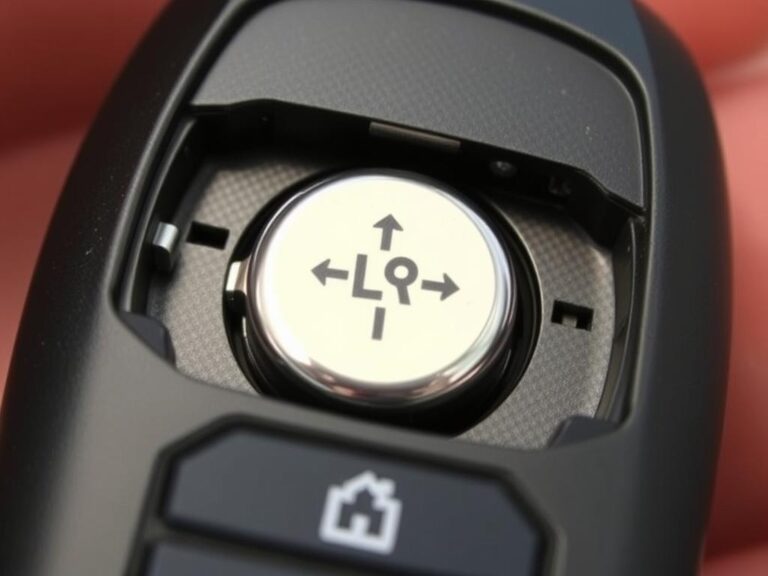Parking in tight spaces can be one of the most stressful parts of driving, especially in busy urban areas. Ford’s innovative Active Park Assist technology aims to eliminate this stress by taking control of steering, acceleration, and braking to help you park perfectly every time. Whether you struggle with parallel parking or finding the right angle for perpendicular spots, this advanced driver assistance system can transform your parking experience.
What Is Ford’s Active Park Assist?
Ford Active Park Assist is an advanced driver assistance technology designed to help drivers navigate challenging parking situations with ease. The system uses ultrasonic sensors and cameras to detect suitable parking spaces and then assists with steering, acceleration, braking, and gear shifting to guide your vehicle into the spot.
The technology has evolved over time, with the latest version being Active Park Assist 2.0, which offers enhanced capabilities compared to earlier versions. While the original system only controlled steering (requiring the driver to manage acceleration and braking), the 2.0 version takes complete control of all parking functions.
Did You Know? Active Park Assist 2.0 can handle parallel parking, perpendicular parking, and even help you exit tight parallel parking spaces!
How Ford Active Park Assist Works

The technology behind Ford’s Active Park Assist is a sophisticated combination of sensors, cameras, and intelligent software. Understanding how these components work together helps appreciate the system’s capabilities.
Sensors and Cameras
Active Park Assist 2.0 utilizes an extensive network of sensors and cameras positioned strategically around the vehicle:
- Twelve ultrasonic sensors: Four on the front bumper, four on the rear bumper, and two on each side of the vehicle
- Four cameras: One in the front grille, one on the rear tailgate, and one on each side mirror
These sensors continuously scan the environment around your vehicle, measuring distances to other parked cars, curbs, and obstacles. The system uses this data to identify suitable parking spaces and calculate the optimal parking path.
Detection and Calculation

When driving at speeds below 22 mph, the system actively scans for potential parking spaces. For optimal detection, you should position your vehicle approximately 3 feet away from other parked vehicles when searching for a spot.
Once a suitable space is found, the system alerts you with a chime and displays a notification on your dashboard screen. The sophisticated software then calculates the perfect path into the parking space, accounting for turning radius, vehicle dimensions, and obstacle clearance.
Types of Parking Supported by Active Park Assist

Parallel Park In
Assists with parking alongside a curb between two vehicles. The system measures the space and guides your vehicle into it with precision, maintaining optimal distance from other vehicles and the curb.

Perpendicular Park In
Helps you back into traditional parking spaces in lots or garages. The system identifies an appropriate space and controls the vehicle to position it perfectly between the lines.

Parallel Park Out
Assists with exiting tight parallel parking spaces. When activated, the system calculates the best path out of the space and guides your vehicle safely back onto the road.
How to Use Ford’s Active Park Assist
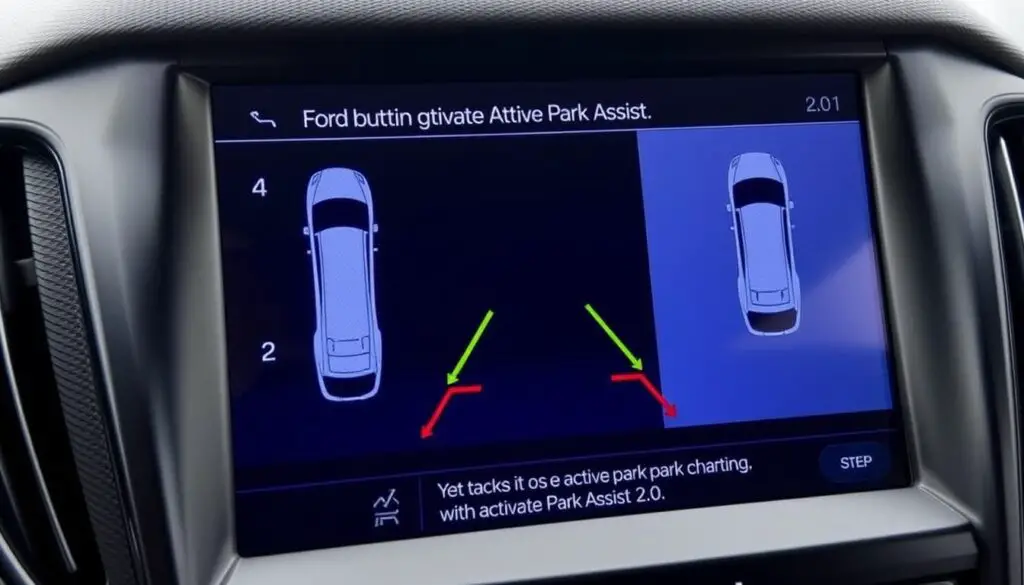
Using Ford’s Active Park Assist is straightforward once you understand the basic steps. Here’s a step-by-step guide to help you master this technology:
- Activate the system: Press the Active Park Assist button located near the transmission selector on the center console. Your vehicle must be traveling at or below 22 mph for the system to engage.
- Select parking side: Use your turn signal to indicate which side of the street you want to park on. If you don’t select a side, the system will default to searching on the passenger side.
- Drive slowly: Maintain a speed under 22 mph and position your vehicle approximately 3 feet away from parked cars as you search for a space.
- Wait for detection: The system will scan for suitable parking spaces and alert you with a chime and dashboard notification when one is found.
- Follow instructions: Stop your vehicle when prompted, then shift into neutral (N).
- Engage park assist: Press and hold the Active Park Assist button, then release the brake pedal when instructed.
- Monitor the process: While the system handles steering, acceleration, and braking, you should remain alert and ready to take control if necessary.
Important: You can cancel the Active Park Assist operation at any time by pressing the park assist button again or by taking control of the steering wheel.
Ford Models with Active Park Assist

Ford offers Active Park Assist across various models in its lineup. The availability and version of the system may vary depending on the model and trim level:
| Ford Model | Available System | Trim Levels |
| Ford Explorer | Active Park Assist 2.0 | Platinum, ST |
| Ford Escape | Active Park Assist 2.0 | Titanium |
| Ford Edge | Enhanced Active Park Assist | Titanium (301A), ST (401A) |
| Ford F-150 | Active Park Assist | With Technology Package |
| Ford Expedition | Enhanced Active Park Assist | Limited (302A), Platinum, King Ranch |
| Ford Mustang Mach-E | Active Park Assist 2.0 | Premium, GT |
Experience Ford Active Park Assist
Interested in seeing how Ford Active Park Assist works in person? Schedule a test drive at your local Ford dealership to experience this innovative technology firsthand.
Differences Between Active Park Assist Versions
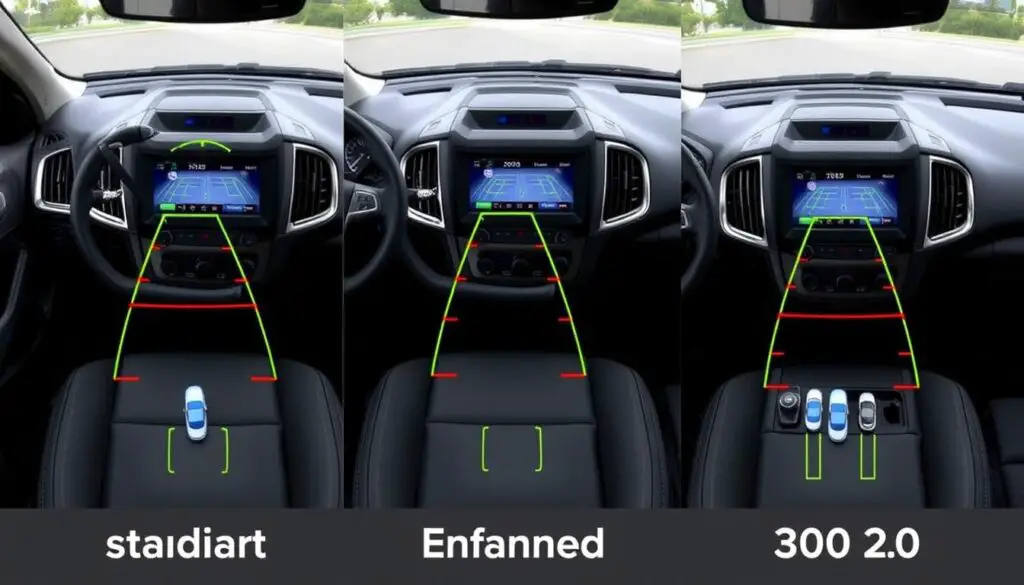
Ford has developed several versions of its parking assistance technology over the years. Understanding the differences between these systems can help you determine which one best suits your needs:
Active Park Assist 2.0
- Controls steering, acceleration, braking, and shifting
- Supports Parallel Park In, Perpendicular Park In, and Parallel Park Out
- Uses 12 sensors and 4 cameras for precise parking
- Available on newer models like Explorer Platinum/ST and Escape Titanium
- Most comprehensive and hands-free experience
Enhanced Active Park Assist
- Controls steering only (driver manages acceleration and braking)
- Supports Parallel Park In, Perpendicular Park In, and Parallel Park Out
- Available on models like Edge Titanium/ST and Expedition Limited/Platinum
- Requires more driver involvement than 2.0 version
Standard Active Park Assist
- Controls steering only (driver manages acceleration and braking)
- Supports only Parallel Park In functionality
- Available on older Ford models or as part of technology packages
- Most basic version with limited capabilities
Benefits of Ford Active Park Assist

Reduced Stress
Parking, especially parallel parking, can be a significant source of anxiety for many drivers. Active Park Assist eliminates this stress by handling the complex maneuvers for you, allowing you to relax knowing your vehicle will park perfectly.
Time Savings
No more circling the block multiple times or making several attempts to fit into a space. Active Park Assist quickly identifies suitable spots and efficiently guides your vehicle into them, saving you valuable time in busy areas.
Damage Prevention
The precise measurements and calculations performed by the system help prevent accidental bumps, scrapes, and collisions during parking. This can save you money on repairs and maintain your vehicle’s appearance.
Accessibility
For drivers with limited mobility or those who find it physically challenging to turn and look behind them, Active Park Assist makes parking more accessible and comfortable.
“I used to avoid parallel parking at all costs, even if it meant walking several blocks. With Active Park Assist in my Ford Explorer, I can now park anywhere with confidence. It’s completely changed my driving experience in the city.”
Limitations and Safety Considerations
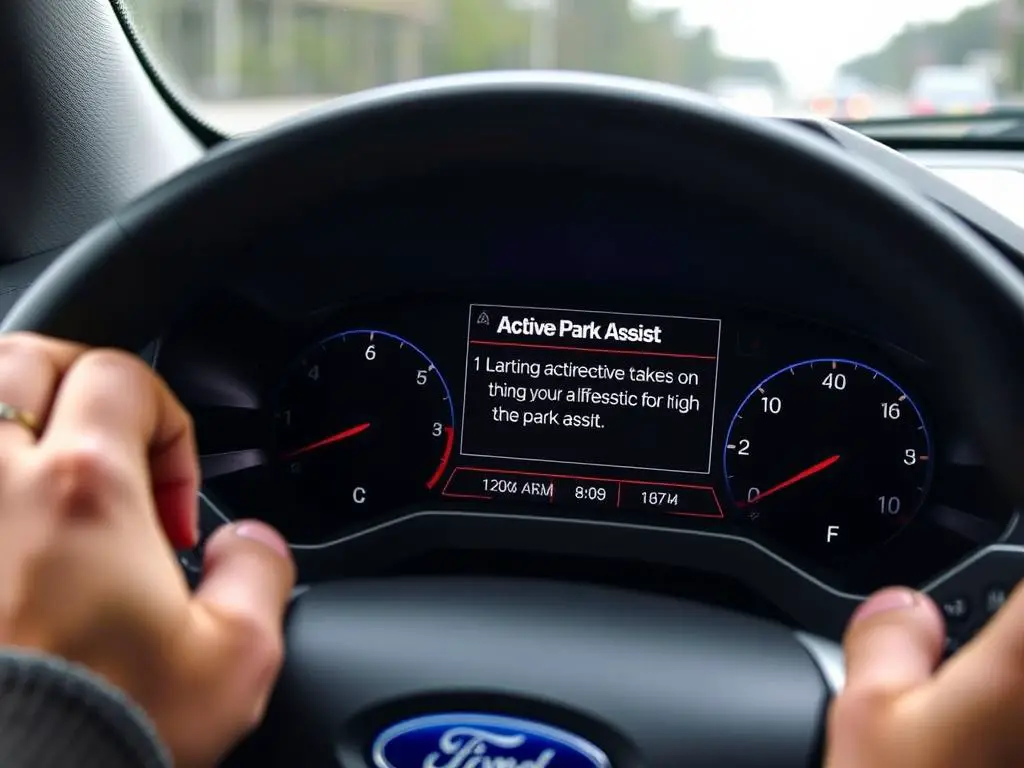
While Ford Active Park Assist is an impressive technology, it’s important to understand its limitations:
Remember: Active Park Assist is a driver assistance feature, not a replacement for attentive driving. Always remain alert and ready to take control of your vehicle.
- Weather conditions: Heavy rain, snow, or fog can interfere with the sensors’ ability to detect spaces accurately.
- Space limitations: The system requires a certain minimum space to operate effectively (typically about 1.2 times the length of your vehicle for parallel parking).
- Unusual obstacles: The system may not detect certain obstacles like chains, narrow posts, or unusual curb designs.
- Speed requirements: The system only works when driving below 22 mph.
- Complex environments: Very busy or chaotic parking areas with moving pedestrians or vehicles may challenge the system.
Frequently Asked Questions About Ford Active Park Assist
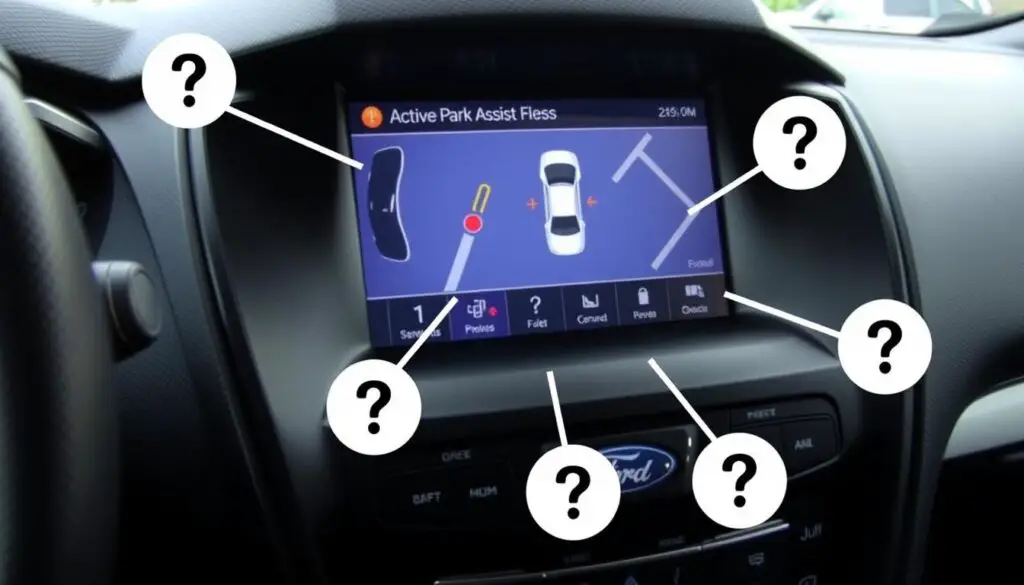
Can I override Active Park Assist if needed?
Yes, you can take control at any time by grabbing the steering wheel, pressing the brake pedal, or pressing the Active Park Assist button again. The system is designed to immediately relinquish control when you intervene.
Does Active Park Assist work for all types of parking spaces?
Active Park Assist 2.0 and Enhanced Active Park Assist work for both parallel and perpendicular parking spaces. The standard Active Park Assist only works for parallel parking. None of the systems currently support angle parking (diagonal spaces).
How do I know if my Ford has Active Park Assist?
Look for the Active Park Assist button near your transmission selector or on the center console. It typically has a “P” symbol with parallel lines. You can also check your vehicle’s manual or enter your VIN on the Ford website to see your vehicle’s specific features.
Can Active Park Assist detect all obstacles?
While the system is sophisticated, it may not detect very small or narrow objects, certain curb designs, or objects above or below the sensor range. Always remain vigilant and ready to take control if needed.
Experience the Future of Parking with Ford
Ford’s Active Park Assist technology represents a significant advancement in making driving more convenient, accessible, and stress-free. Whether you’re navigating tight city streets or crowded shopping center parking lots, this innovative system can transform one of driving’s most challenging tasks into a simple, automated process.
As parking assistance technology continues to evolve, Ford remains at the forefront with its comprehensive Active Park Assist 2.0 system, offering drivers unprecedented control and convenience. By understanding how to use this feature effectively, you can enjoy all the benefits it has to offer while maintaining safe driving practices.
